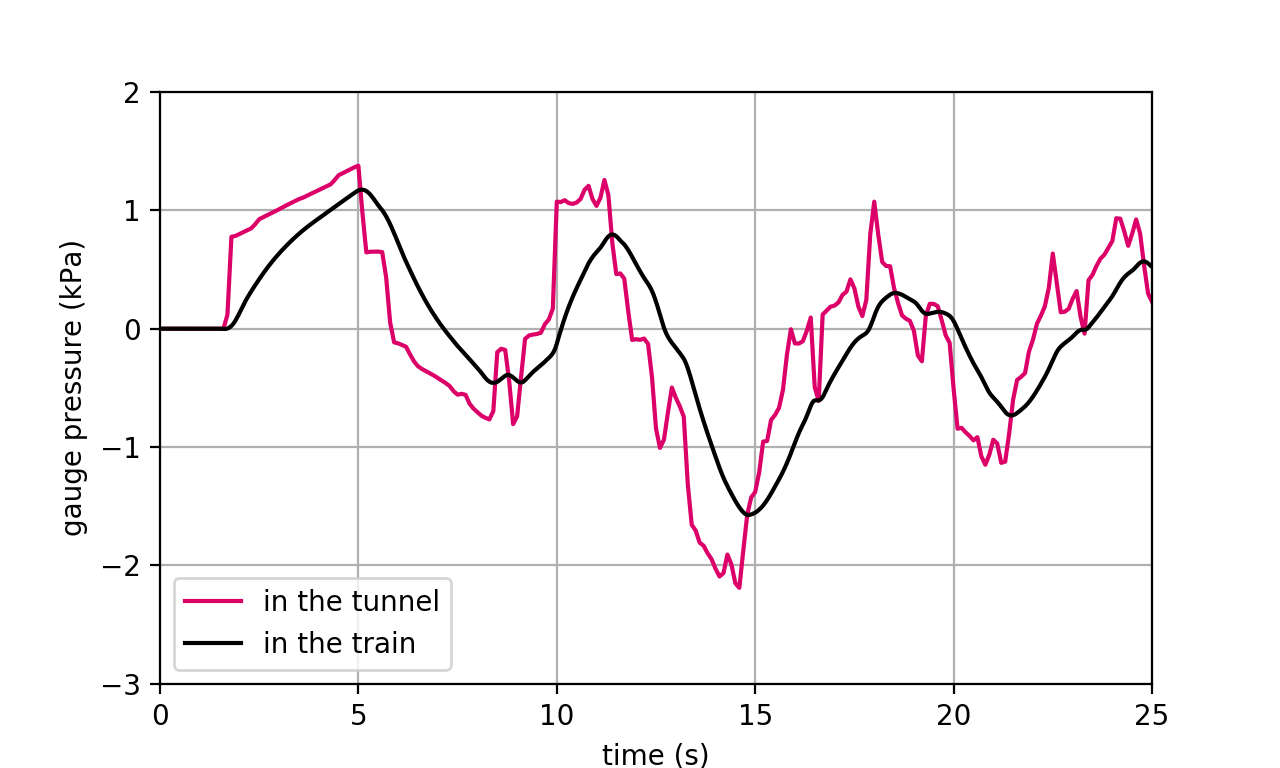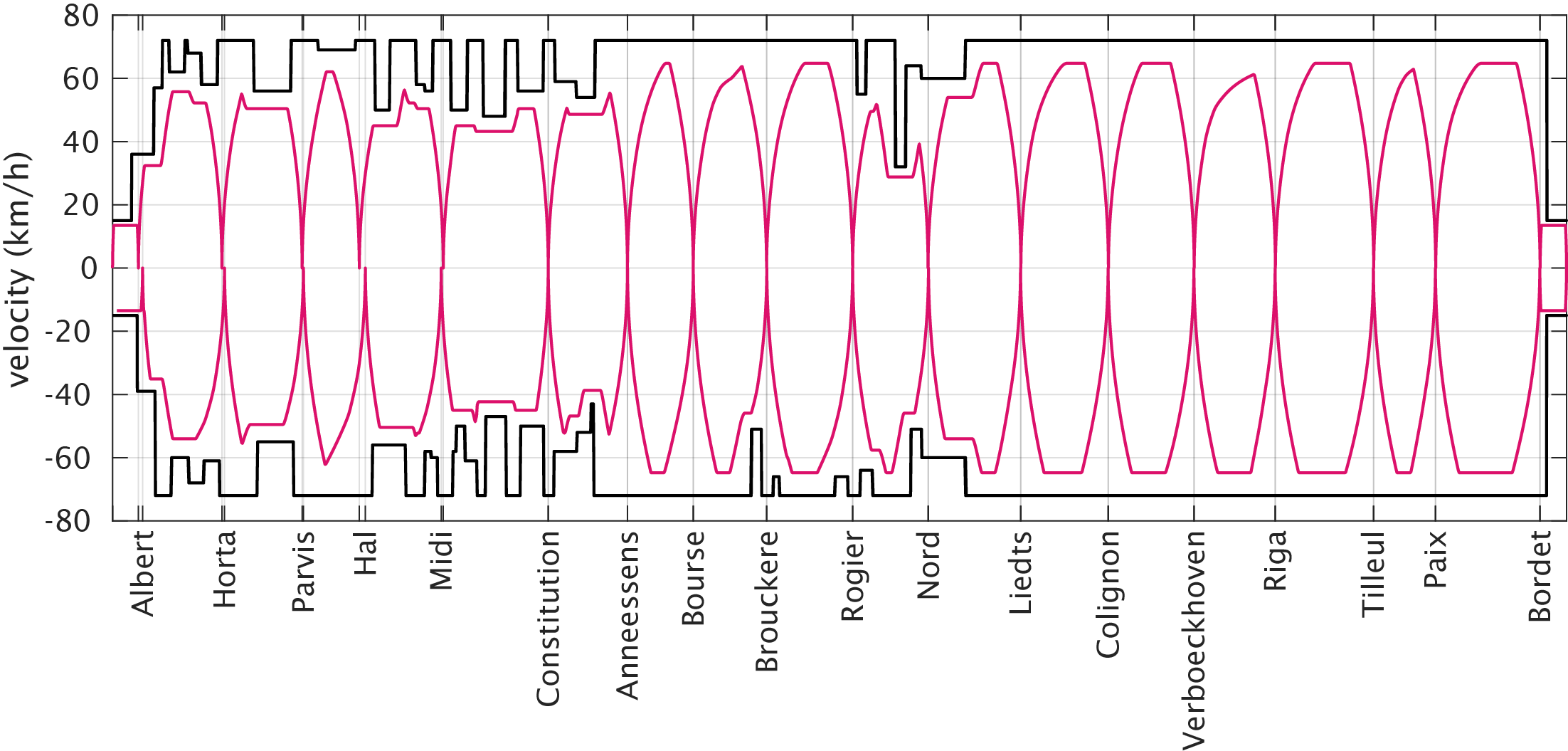APPLICATIONS
Aerodynamic loads
TNT simulates the pressure wave propagation in the network including the reflection and transmission effects at the tunnel junctions and at the open ends of the network.
This capability is used to compute thermal and aerodynamic loads on the moving vehicles (lift, drag, lateral force), on the infrastructure and on the equipment (for example on signaling and on platform screen doors).

Pressure wave propagation, transmission and refection.
Tympanic safety and comfort
TNT simulates the pressure variations inside the moving vehicles, which are related to the propagation of pressure waves inside the tunnels and shafts.
This capability is used to predict tympanic safety and comfort of the passengers, which impacts the specifications of the rolling stock and the timetables due to eventual velocity restrictions.

Example of the time-evolution of the gauge pressure in the tunnel and in the moving train.
Fire simulations
TNT simulates tunnel fires and related smoke propagation, which is mainly driven by buoyancy effects, the operation of ventilation systems and climate conditions at the open ends of the network.
The evolution of temperature, smoke concentration and visibility conditions are among the quantities obtained with TNT that are used for the definition of the ventilations systems, evacuation strategies, egress paths and intervention procedures.

Example of temperature distribution in case of tunnel fire
Climate Studies
TNT simulates the evolution of temperature, humidity and pollutants concentration on the short- and long-term (typically few decades) according to the train scheduling road traffic forecasts and meteorological data.
This capability is used to design the ventilation systems, which guarantee tenable environmental conditions in the network.

Example of tunnel temperature distribution along the tunnel at different seasons and hours
Train scheduling
TNT computes the vehicle dynamics along a predefined itinerary in complex railway or metro networks taking into account the specifications of the rolling stock and the train control system.
This capability allows validating the rolling stock performances, defining timetables and designing power supply systems.

Veocity-space diagram for the shuttle trip of a single vehicle along a complete metro line
Thermo-elasticity
TNT computes the heat transfer in beam networks due to conduction, convection and radiation. By 1D/3D coupling with industrial solid mechanics software, thermo-elastic simulations can be performed.
This capability allows assessing the resistance of beam networks to fires for instance.


